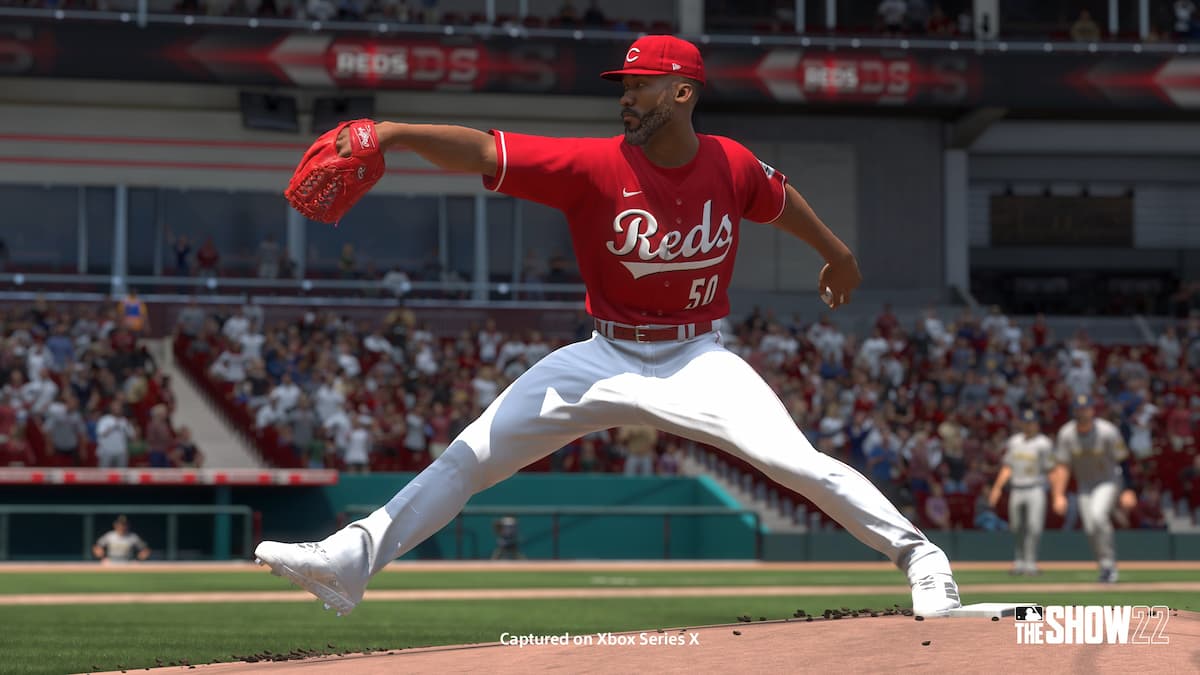Baseball is a slow, plodding, increasingly antiquated mess of a sport. It has the longest calendar and the most games played of any of the American major sports, meaning that a single game or even a single series can mean next to nothing. Yet I can’t stop myself from playing baseball games every year, because there is a pace to MLB The Show 22 that becomes comfortable. Within the span of about one or two seconds, you have to identify a pitch, hover the aiming marker over the right spot, then swing at exactly the right time. A single millisecond early or late is the difference between a game-winning home run and a lazy fly ball that can’t even be carried out of the infield.
That all sounds a tad overwhelming, and honestly, sometimes it can be. Sometimes you get into do-or-die situations when a fastball you’ve driven to center for 3 doubles hits the exact same spot and is caught by the pitcher. The inning is over. It’s that kind of potential that makes baseball work for me. It’s a game where failing seven out of ten times is expected. Yet I’m woefully disappointed in my own mistakes.
Over the last two years, Sony San Diego has spent most of the resource budget porting the game to other major platforms. The developers even went so far as to add two lower-end difficulties to help with onboarding. If you’re picking up MLB The Show for the first time, you’re in a fantastic spot. Once you understand how to succeed, you try to go one layer deeper and succeed at the game’s big year-long live service hook, Diamond Dynasty.
Gacha mechanics and their inclusion in massively popular AAA games have been a hotly contested issue for over a decade now. While blind boxes can add some lighthearted randomness to a game, they can also cause massive problems. Consider this January 2022 story about hackers and trolls targeting top players and attempting to empty their FIFA accounts.
MLB The Show strives to give players enough rewards. It’s doing its honest best to copy the Fortnite model, which is to turn the reward faucet up and make people feel good. For the most part, I think it succeeds because objectives are simple and cumulative, and don’t have to be earned in a single game. The problem starts to fester as soon as you want to enter the PvP space. As soon as you face other humans, you find out that not only are people spending more than you, but they are also fantastic at the game and will do everything they can to irritate you and try to force you to quit. MLB The Show makes an effort to keep card prices low; you can sell common or bronze cards for more than a certain amount, but top-tier cards, such as the Live Series version of cover star Shohei Ohtani, can be so rare that they cost nearly $100 in in-game currency. Even in this game that will take several weeks to grind out in-game, or hours spent playing “buy low, sell high” in the marketplace.
If it sounds like I’m down on the game, I’m not actually. I’m down on myself for not being as disciplined as everyone else. I wish I could sit there and make a 100 stubs profit on every card I buy, keep doing that that for 3 hours, and make all the Stubbs I need, but I feel a bigger drive to just play the game. It doesn’t matter how good the rewards for playing are, when you get walloped 6-0 and give up 12 strikeouts, you feel an innate drive to go and get better cards somehow.
In spite of my own frustrations about my play, I’m still on pace to finish the 1st Feature Program. The game is actively trying to reward the people playing. So if the developers are designing a game that can be enjoyed by everyone, why am I becoming so self-critical? Why do I curse at myself every time I blow a late-game lead? I think it’s mostly because I want to be “good” at the things I love. It’s this unhealthy dynamic where I want to put as much work into playing the game as the developers do making it. MLB The Show 22 does its best with what it’s allowed to do, but Diamond Dynasty chains it to the exasperation of the capitalist system that works players to the bone until they tap out. Even though I’m predisposed to enjoy it all year long, I don’t know how long my design to play will stretch beyond the game’s own limits.







Published: Apr 19, 2022 02:41 pm